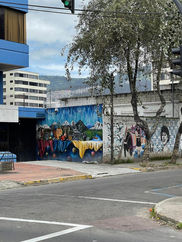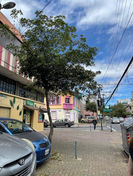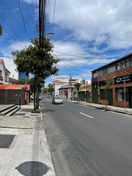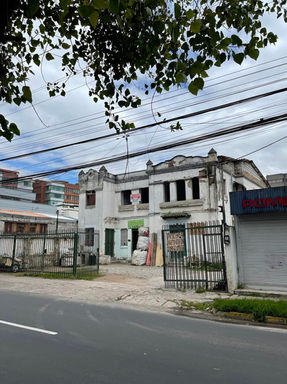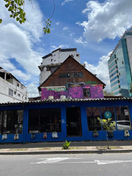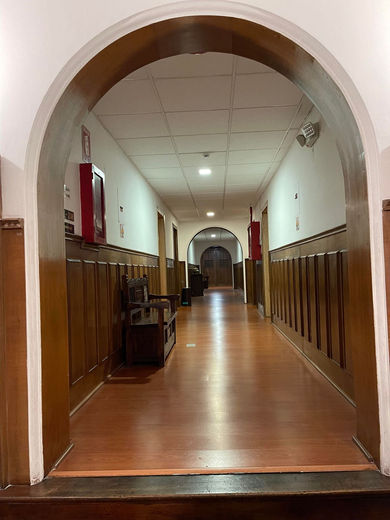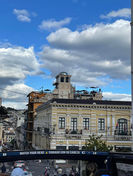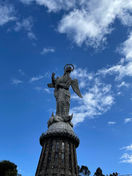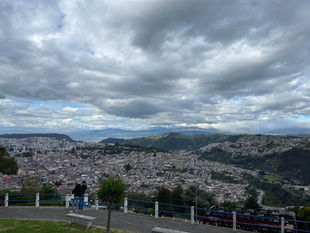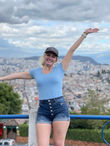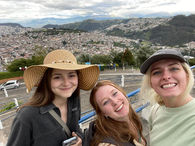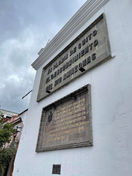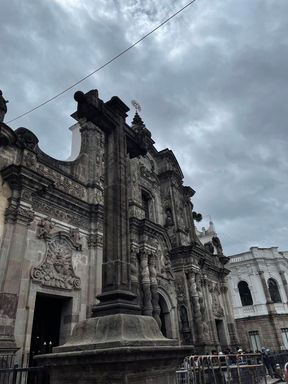Land Use
The capital of Ecuador, Quito, is divided into five regions: north... etc


Land Use
Urban development/sprawl, duality problems, and historic preservation
The city of Quito is divided into seven regions: Extreme North, North, Center North, Center, Center South, South, and Extreme South. Each region is made up of different population densities, classes, and cultures.
We spent most of our time in the Center North and Center regions. This is where our hotel, Hotel Ambassador, the historic district, the Mariscal district, and most inner-city neighborhoods are found.

La Mariscal
The Mariscal District was Quito's first suburban neighborhood beyond the city. In the 1920's and 1930's it was a very upscale neighborhood, with art at the forefront of architecture and lining the streets. The beauty of this art-deco era can still be seen today in the historic buildings the city has and graffiti painting walls throughout the district.
In the 1950's, the Mariscal district saw suburbinization. People began moving here after being displaced, which led to squatters and the hippie movement of the 1960's. Squatters are still present today, but building owners try to drive them away by lining walls with shattered glass. By the 70's and 80's, drug culture had become commercialized and university students brought the art movement. At this time, the district was mainly made up of the working class, university students, the artist community, and sexual workers.
Starting in the 1990's and continuing today, transactive planning committees work with the city's planning department to design, plan, and take ownership of new projects within the district. For example, university students can help design what they want, and their needs are often met. Through this process, the needs of people and social justice come first. This is a stark contrast to how the U.S. plans and carries out projects, which is often based on the needs of the economy rather than the people.
Scroll through the gallery below to see the Mariscal's art, architecutre, and street life.
Hotel Ambassador
Our hotel, Hotel Ambassador, was located in the Mariscal District in Quito. The hotel was initially used as a hostel for travelers, workers, and students as they'd pass through. Because of this, no room at Hotel Ambassador is the same as the next. Each room features distinct characteristics, which separate it from the rest. My room, for example, had four beds, a fireplace, and two doors leading into the hallway - one with a hatch to view the hallway from inside.
The hotel also features original photographs, documents, and art from when it was first built. Scroll through the gallery below to get a glimpse into the historic Hotel Ambassador.
Casco Colonial
Casco Colonial, or Old Colonial City, was founded in 1534. The historic district was named the very first World Heritage Site by UNESCO in 1978. Along with this new title, however, came displacement as residences became historic landmarks. Changing the functionality of these buildings has led to a decrease in the area's population. While many of the historic buildings remain, urban growth threatens their preservation. More often than not, buildings are multipurpose. They can be seen featuring restaurants or storefronts on the ground level and housing on the upper floors. Additionally, with the increase in tourism around the area, a new financial district has arrived. The area now has two CBD's (historic district and financial district), making it polycentric.
Scroll through the gallery below to gain insight into the districts.






